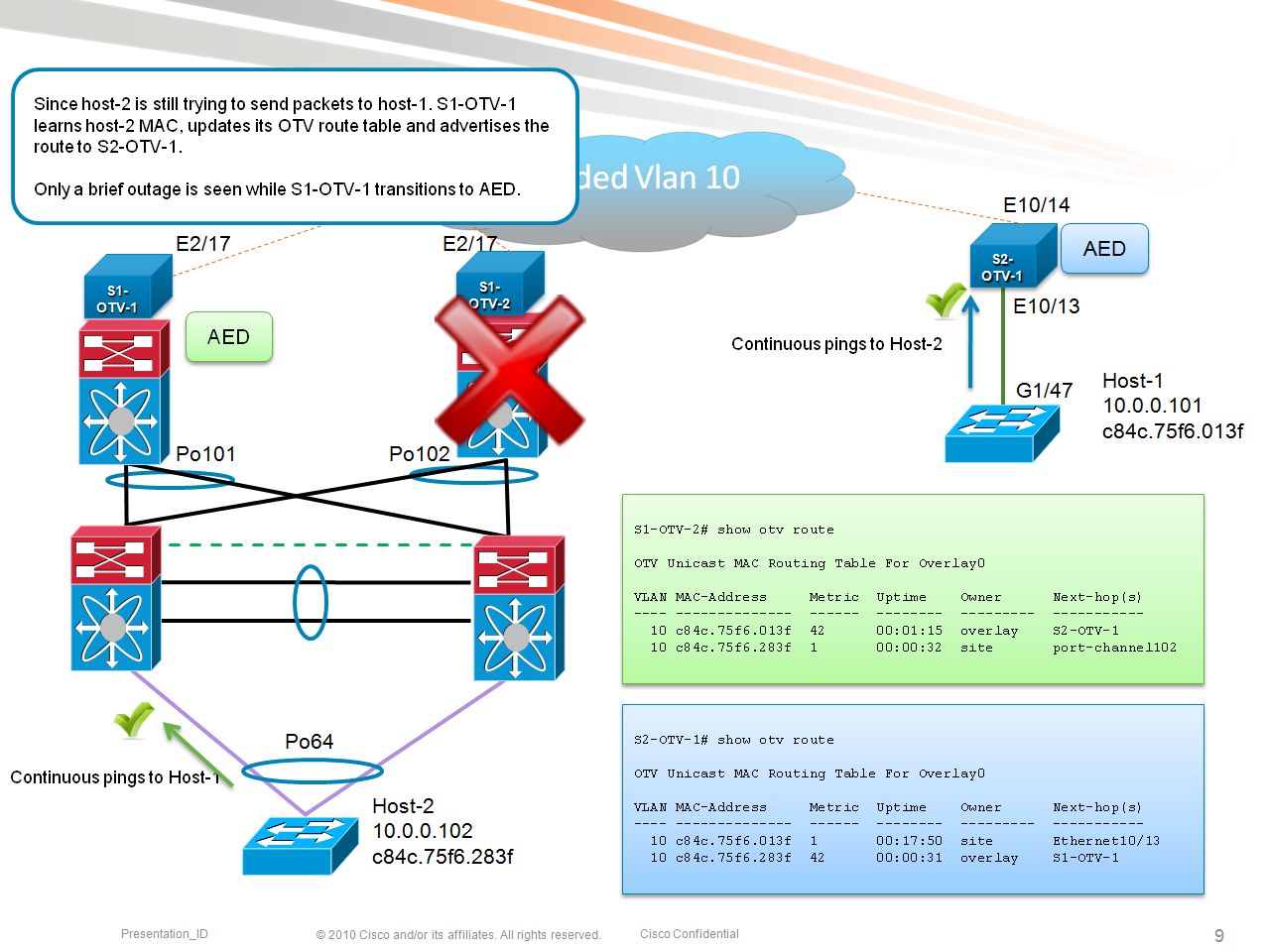OTV assumes that there are no silent or unidirectional devices:
There are several scenarios where a silent host can cause connectivity issues. The purpose of this document is to show why traffic loss occurs during an AED failover.
(Power Point Presentation appended to this document).

1) Before failover, traffic between hosts is working successfully.
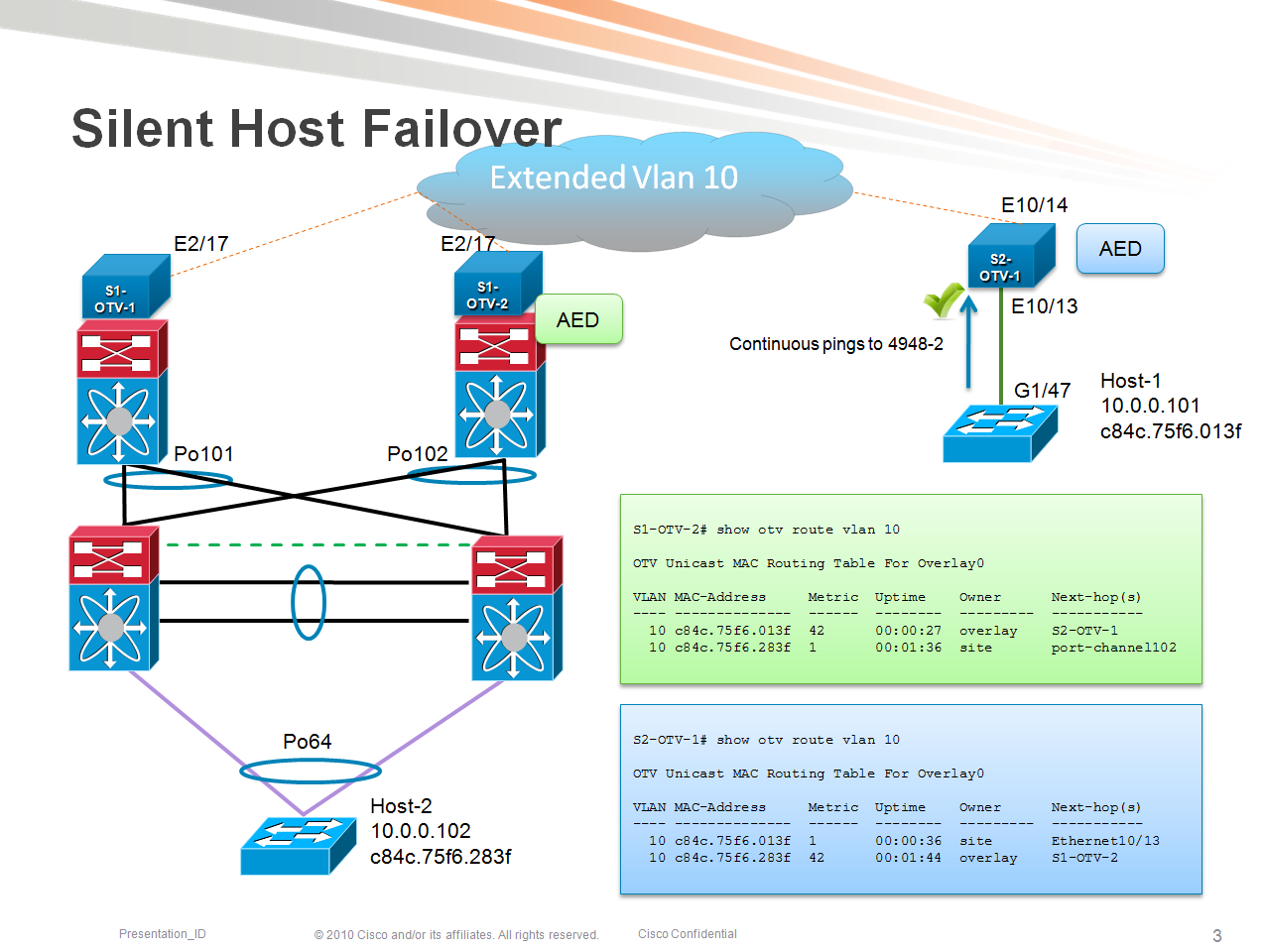
2) AED failure occurs at site-1
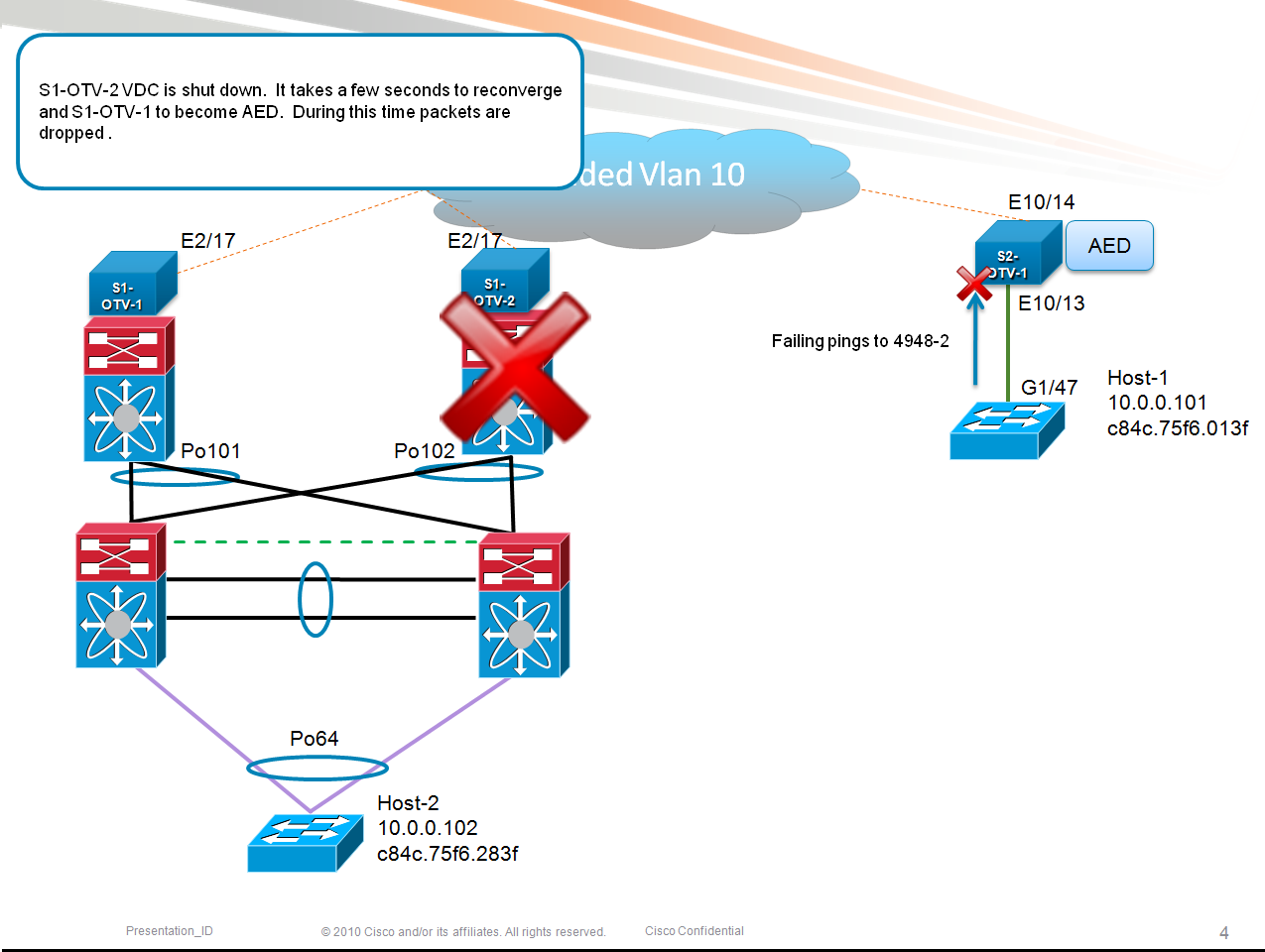
3) New AED role established for the vlan at site-1 but traffic continues to fail. The duration of the connectivity issue can range from a few seconds to several minutes depending on the length of time it takes for Host-2 to generate a packet.
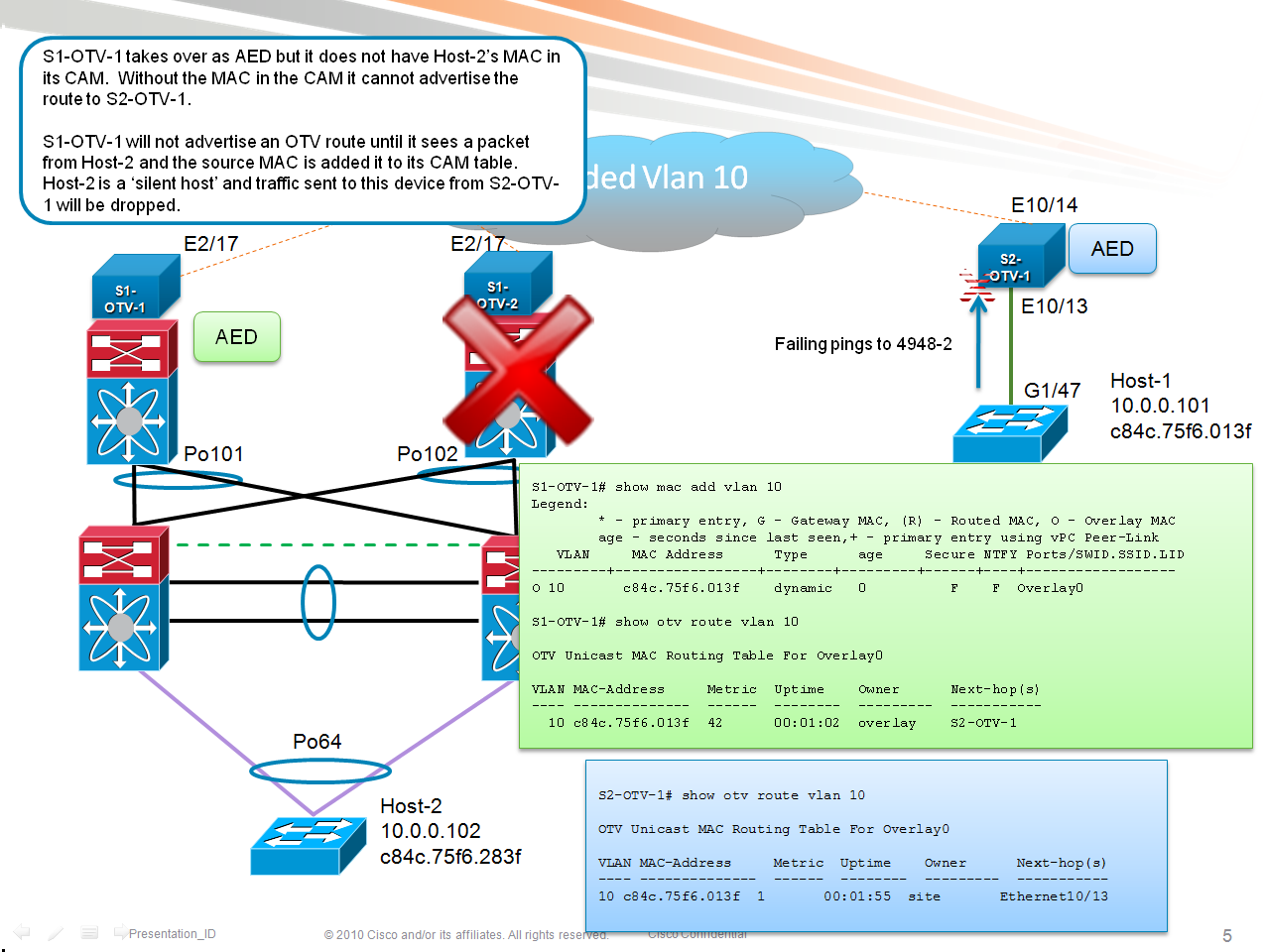
4) Connectivity is restored once new AED learns Host-2's MAC
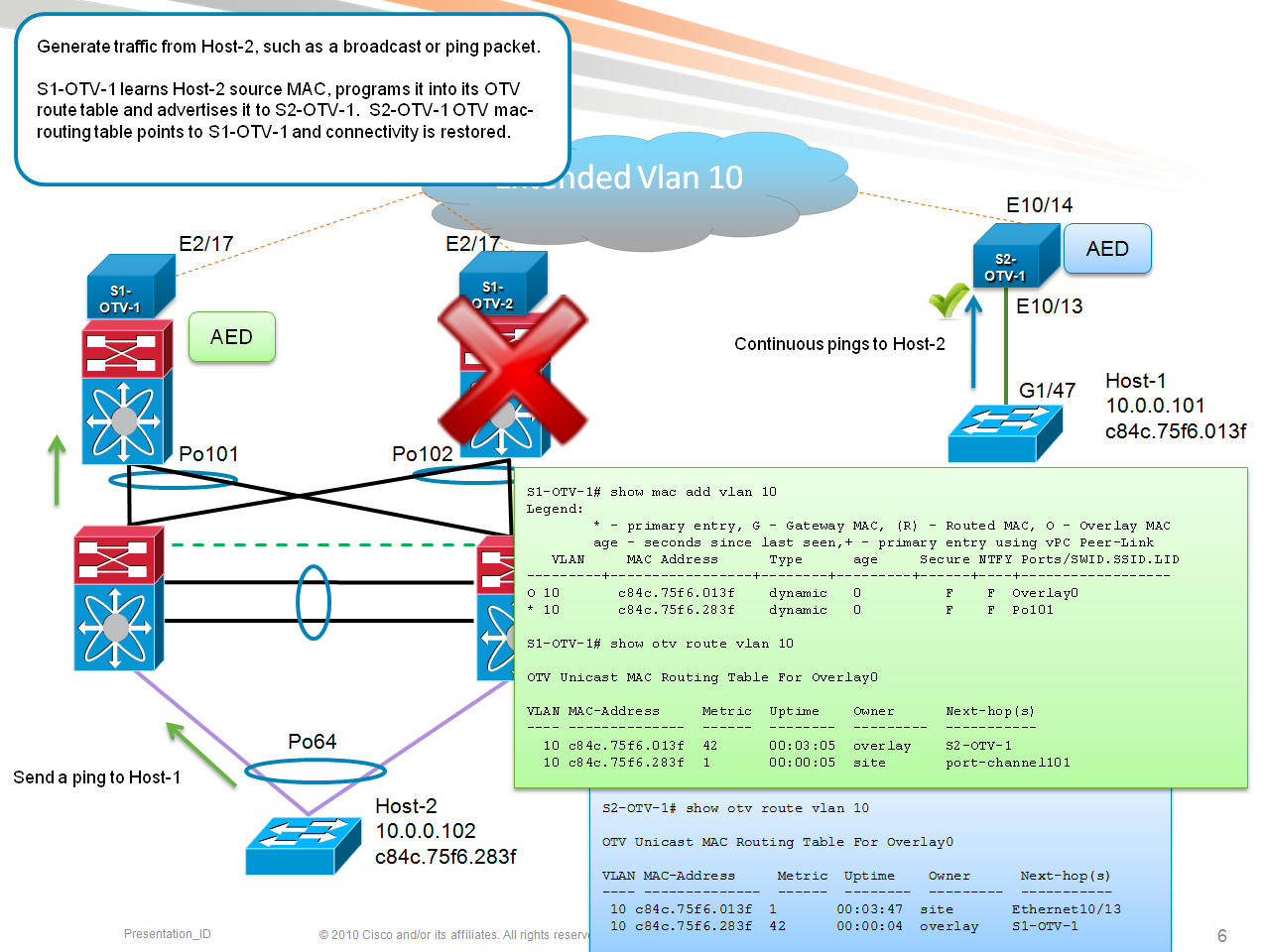
Failover scenario for between non-silent host. Rarely in real networks will a there be completely silent devices. Thus, failovers between AEDs converge quickly as the local MACs are relearned. Generally, the "silent host" scenario is seen in testing environments only.
1) Before failover, traffic between hosts is working successfully.
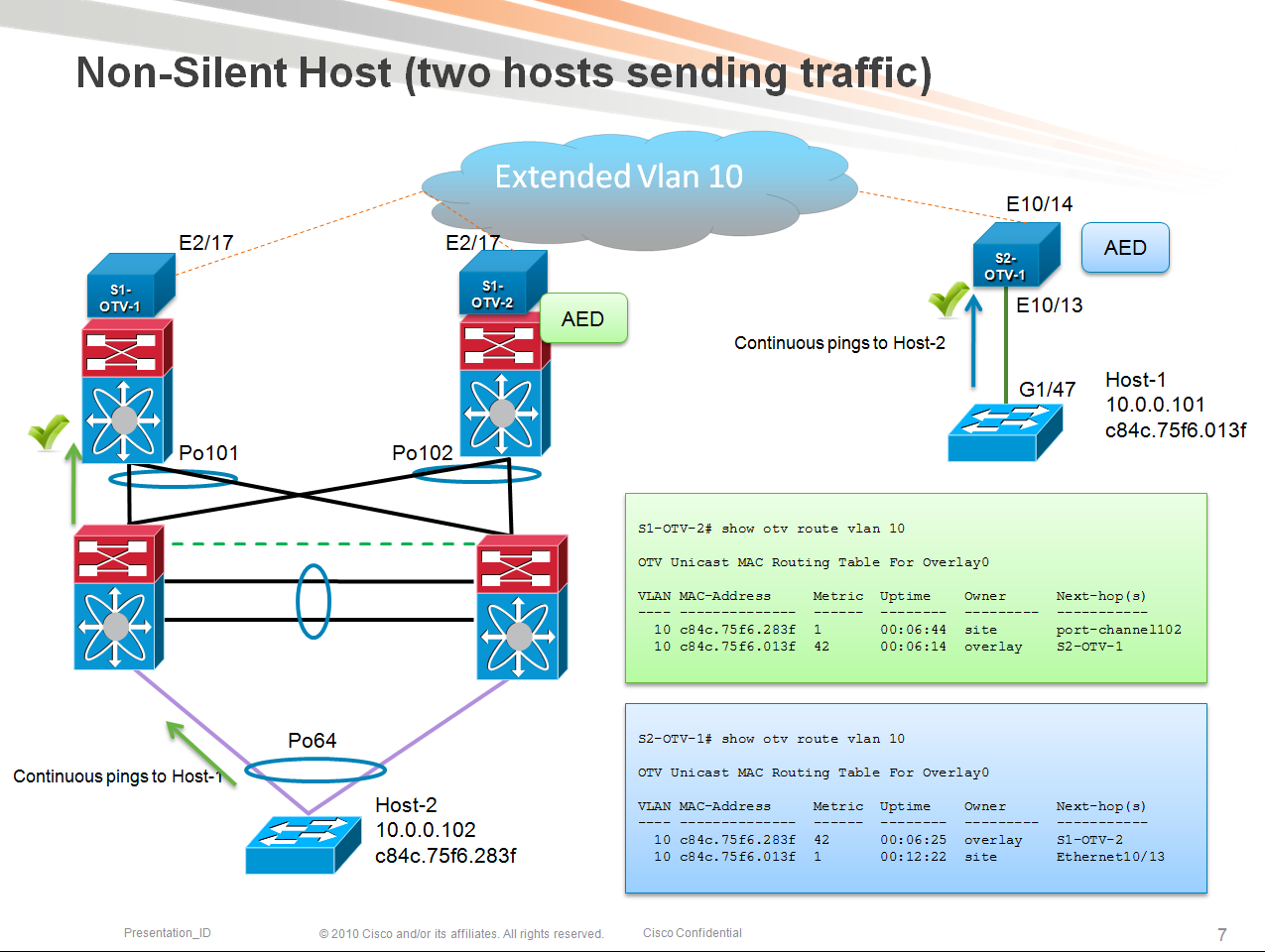
2) AED failure occurs at site-1
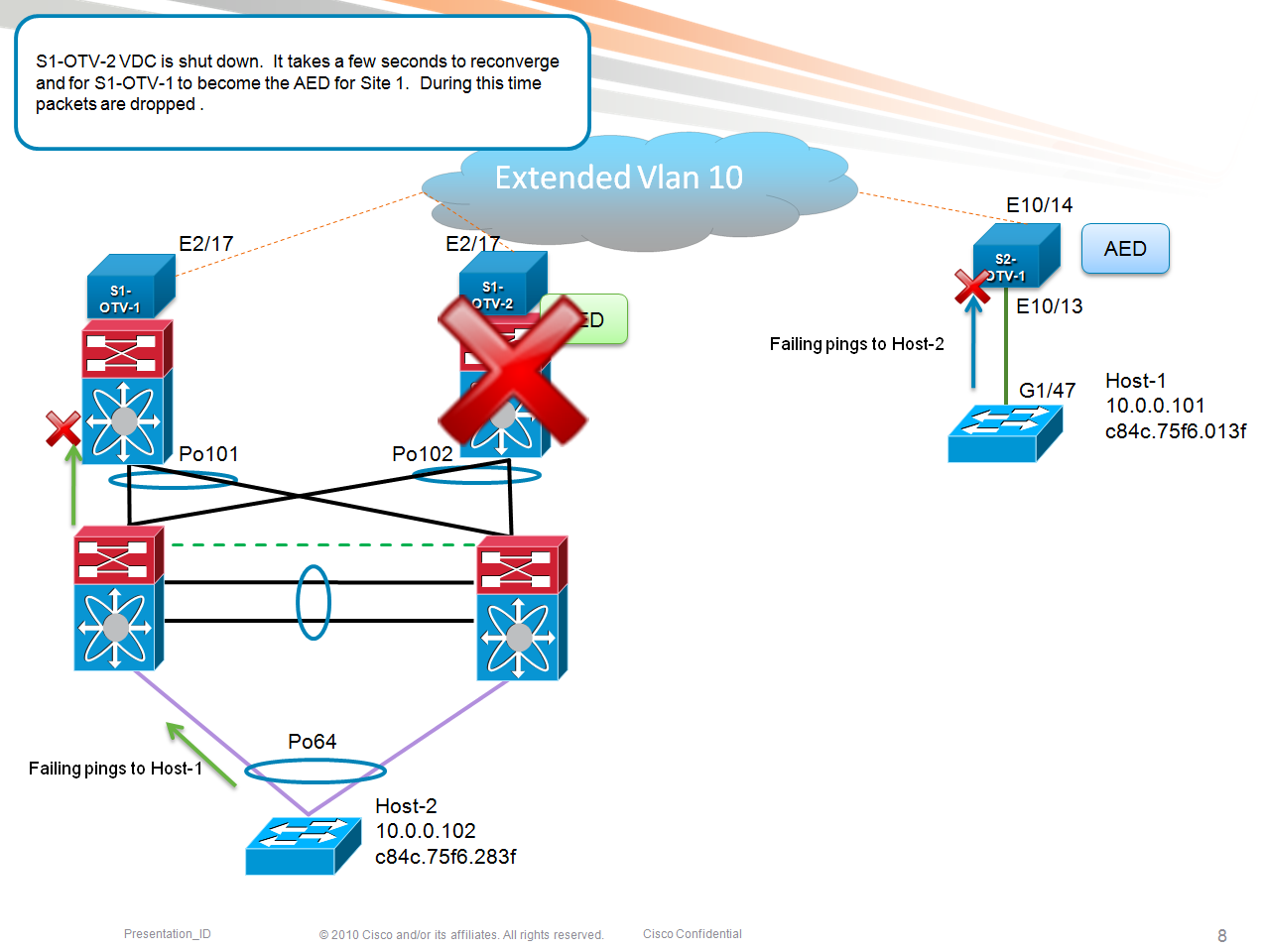
3) AED immediately learns Host-2's MAC and is able to install the entry into it's CAM and OTV route table. It then advertises the route to S2-OTV-1 and connectivity is quickly restored. Note that the original AED failure generates a TCN on the vlan of site-1. Thus packets from Host-2 to Host-1 will be flooded throughout the network ensuring that it reaches the new AED.
